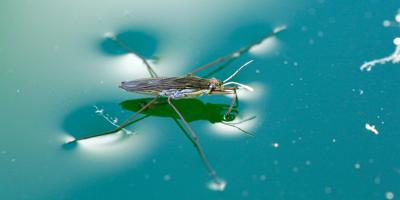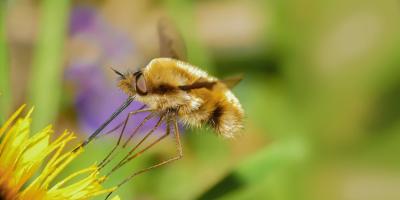How Ants Follow Trails and Find Food

An infestation of ants is certainly no picnic, and dealing with them no walk in the park. With more than 140 different species native to the region, ants represent New England’s most common pest. As we head into summertime with our imaginations full of outdoor plans, they’re quietly building an army.
An Ancient and Intelligent Annoyance
Ants are among the oldest species still abundant on the earth. In fact, they were the first creatures to form into a civilization by assembling into city-like colonies and inventing agriculture, not to mention developing their incredible ability to communicate.
Ants “speak” to one another using a complex exchange of pheromones, which are chemicals produced by animals that change the behavior of other animals. Pheromones trigger all kinds of responses; including raising an alarm, delineating a territory and, most importantly, signaling a food trail.
That’s why one ant can turn into hundreds, or even thousands, seemingly in the blink of an eye.
When one ant ventures out to find food, it leaves a faint path of pheromones behind it, similar to dropping a trail of breadcrumbs in the woods. When it finds food, it retraces its steps, this time leaving a different, stronger pheromone as a guide to the jackpot.
As other “scout” ants happen across this trail, they follow it to the food source, grab a piece, then follow the trail back to their colony. Upon their arrival, even more ants will follow as they were waiting back at home for one or more of the scouts to return.
Each time an individual ant traverses the chow line, it lays down even more pheromones, strengthening the chemical trail so the rest of the colony can all jump in to help.
Such an ingenious mode of communication also helps protect the colony and insulate it against attack. Once the message gets back to headquarters, destroying the few ants who have gathered at the food source does nothing to quell the onslaught. A virtually unstoppable swarm of six-legged creatures is already on its way.
Fight Back Against Pheromones
Destroying a colony of ants and preventing their return requires understanding how ant “societies” operate, and using their weaknesses to our advantage.
First, just like swarms of bees, ants have a “queen” that never leaves the nest. As the one who lays all the eggs, she is the mother of the entire colony. That’s why killing ants “in the field” does nothing to stop them from continuing to mount an offensive: the queen will just keep making more of them.
When planning your defense against an ant infestation, you have to go undercover by following the trail of ants away from their newly-discovered food source without killing them. They aren’t just carrying in food around aimlessly—they’re heading home.
Don’t let the temptation to spray the ants win out; a whole new generation of worker ants is being groomed back at the colony. There’s no home-field advantage for you, so you’ll never win by challenging the ants on your own turf. Instead, you need to outsmart them and take them out where they feel the safest: their homes.
Whether you have an existing ant issue or simply want to prevent one from developing, contact our pest management professionals for a free ant control quote. After all, if you don’t rain on the ants’ parade, they’ll surely rain on yours.



